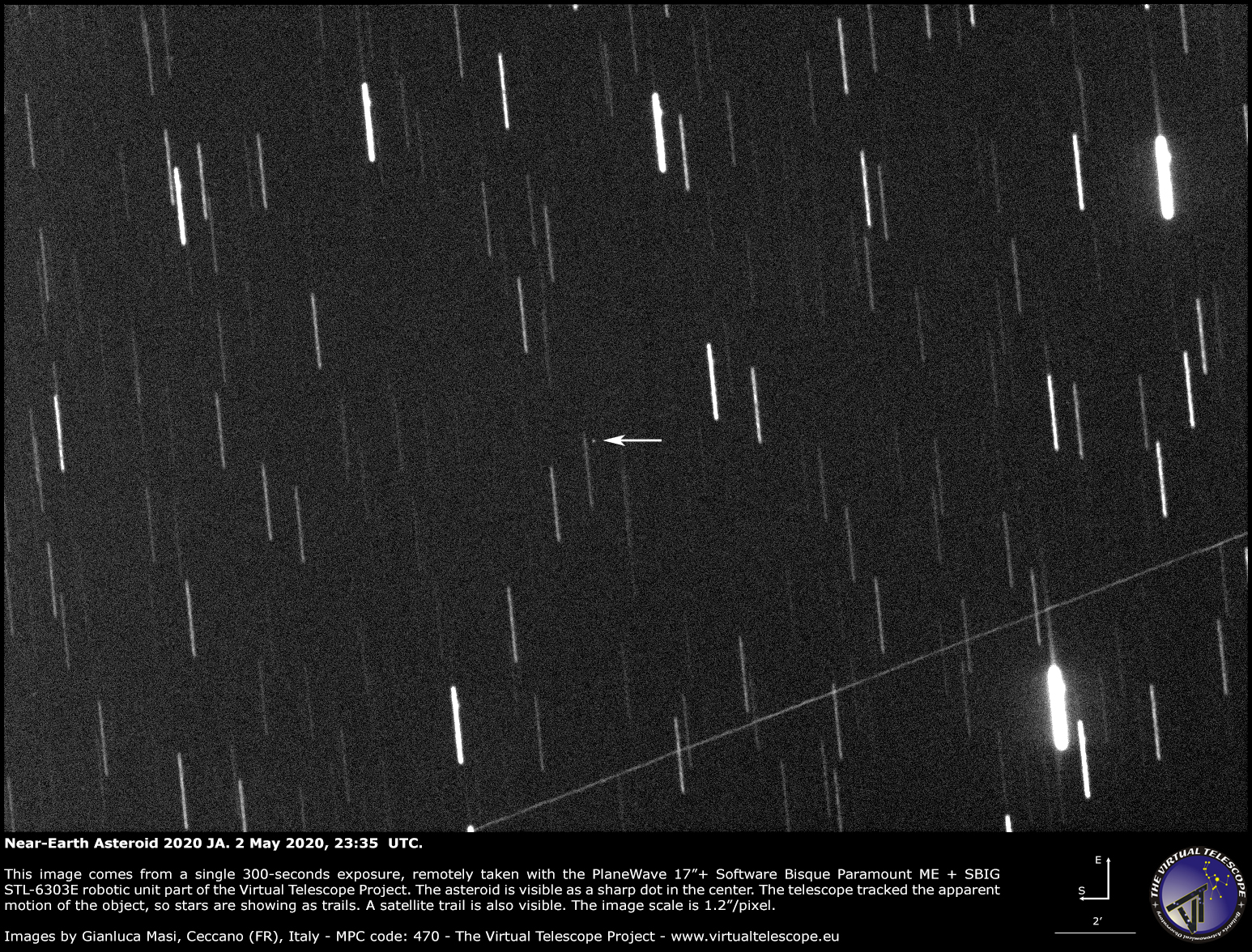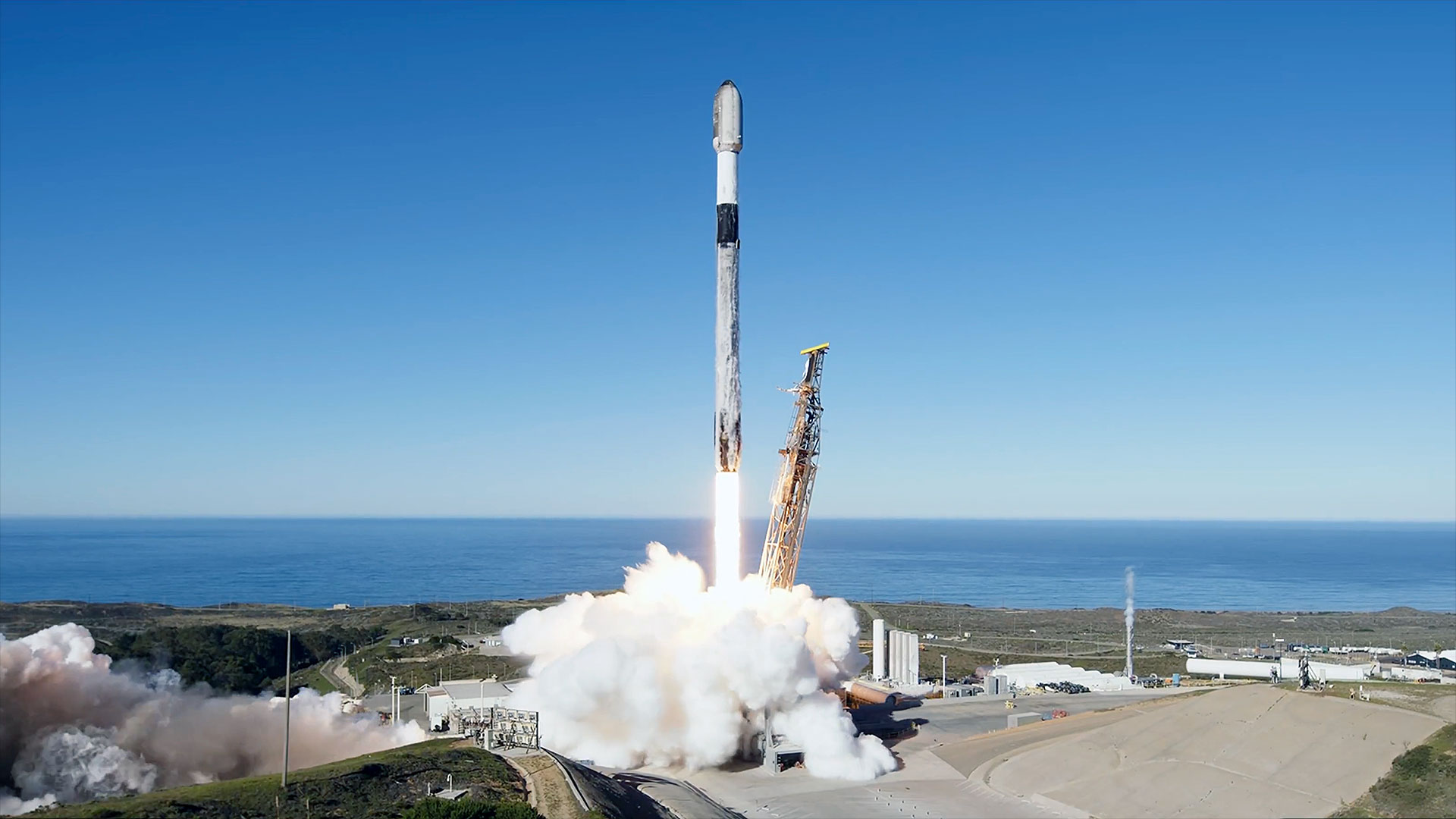A small asteroid the size of a bus will fly safely by Earth today
A newly discovered asteroid about the size of a bus will zip safely by Earth today (May 3), passing at a distance just over halfway to the moon.
The asteroid 2020 JA will fly by Earth at a range of about 148,000 miles (238,000 kilometers) when it passes today. That's about 0.62 times the distance between the Earth and the moon. (The moon is about 239,000 miles, or 385,000 km, on average.)
Asteroid 2020 JA is between 31 and 72 feet wide (9.6 to 22 meters), according to NASA's Center for Near Earth Object Studies. NASA's Asteroid Watch widget listed the asteroid's diameter as about 40 feet (12 m) and compared its size to a city bus.
Related: Potentially dangerous asteroids (images)
Astrophysicist Gianluca Masi of the Virtual Telescope Project in Ceccano, Italy captured an image of 2020 JA with a telescope. In the image, the asteroid appears as a tiny point of light in a star field.
Small asteroids like 2020 JA zip by Earth several times a month, and typically pose no risk to our planet, NASA officials have said. For example, a tiny asteroid called 2020 HS7 passed Earth at a distance of 23,000 miles (36,400 km) on April 28 but posed no risk of impact.
Scientists with NASA's Planetary Defense Coordination Office regularly track near-Earth objects like comets and asteroids to search for potential impact threats to our planet. To date, astronomers have found 22,776 near-Earth objects, more than 95% of them discovered through NASA-funded surveys, the agency has said.
Breaking space news, the latest updates on rocket launches, skywatching events and more!
New asteroids like 2020 H7 and 2020 JA are being discovered all the time at a rate of 30 each day, NASA has said.
- Mile-long asteroid 1998 OR2 dons 'mask' before Earth flyby (photos)
- About 17,000 big near-earth asteroids remain undetected
- Huge asteroid will zip by Earth April 29. See the latest telescope photos.
Email Tariq Malik at tmalik@space.com or follow him @tariqjmalik. Follow us @Spacedotcom, Facebook and Instagram.
OFFER: Save 45% on 'All About Space' 'How it Works' and 'All About History'!
For a limited time, you can take out a digital subscription to any of our best-selling science magazines for just $2.38 per month, or 45% off the standard price for the first three months.

Tariq is the award-winning Editor-in-Chief of Space.com and joined the team in 2001. He covers human spaceflight, as well as skywatching and entertainment. He became Space.com's Editor-in-Chief in 2019. Before joining Space.com, Tariq was a staff reporter for The Los Angeles Times covering education and city beats in La Habra, Fullerton and Huntington Beach. He's a recipient of the 2022 Harry Kolcum Award for excellence in space reporting and the 2025 Space Pioneer Award from the National Space Society. He is an Eagle Scout and Space Camp alum with journalism degrees from the USC and NYU. You can find Tariq at Space.com and as the co-host to the This Week In Space podcast on the TWiT network. To see his latest project, you can follow Tariq on Twitter @tariqjmalik.



